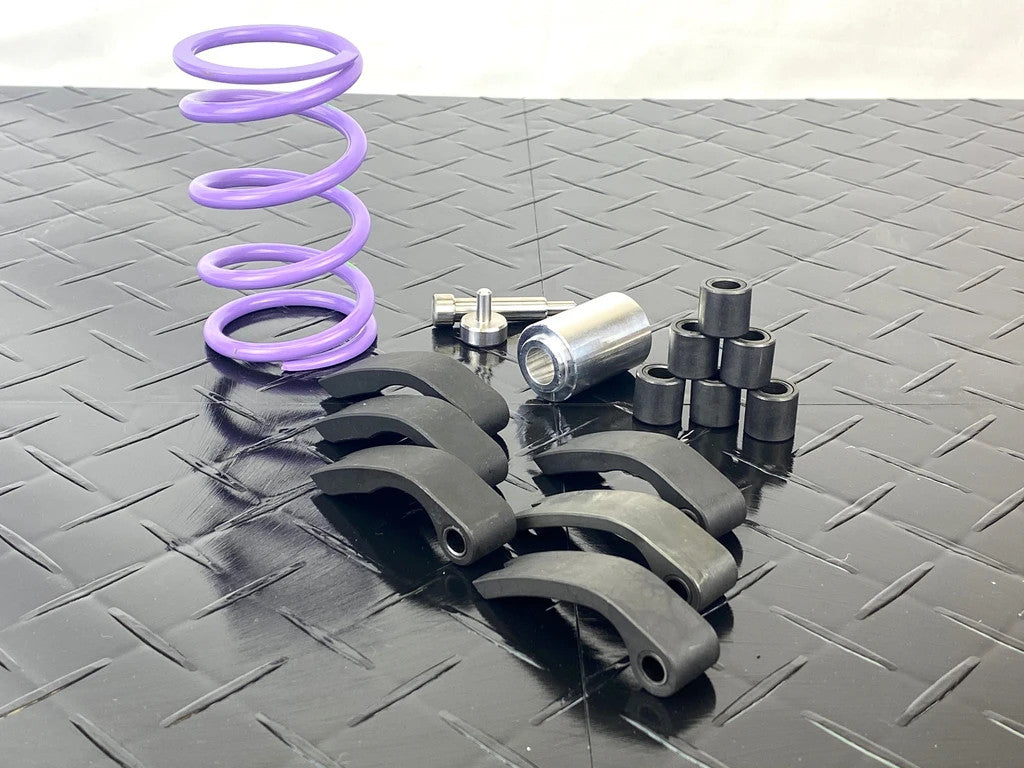What does a clutch do? Should I change my clutching? Should I buy a clutch kit?
Basis of Clutch Operation
Driven clutches primarily sense torque and will open and close according to the forces applied to it from the drive belt and transmission input shaft. If the torque resistance at the transmission input shaft is greater than the load from the drive belt, the drive belt is kept at the outer diameter of the driven clutch sheaves.
As engine RPM and horsepower increase the load from the drive belt increases. This results in the belt rotating up toward the outer diameter of the drive clutch sheaves and downward into the sheaves of the driven clutch. This action, which increases the driven clutch speed, is called upshifting.
Should the throttle setting remain the same while the vehicle is subjected to a heavier load, the drive belt will rotate back up toward the outer diameter of the driven clutch and downward into the sheaves of the drive clutch. This action, which decreases the driven speed, is called backshifting.
Situations where loads vary (such as uphill and downhill) with throttle settings constant result in the drive and driven clutches continually shifting to maintain optimum engine RPM. At full throttle a perfectly matched Continuously Variable Transmission (CVT) system should hold engine RPM at the peak of the power curve. This RPM should be maintained during clutch upshift and backshift. In this respect, the CVT system is similar to a power governor. The CVT system changes engine load requirements by either upshifting or backshifting rather than vary throttle position as a conventional governor does.
Perspective
A "dialed in" clutch would be one that holds RPM at the peak of the power curve during upshift and backshift.
Recreational riding isn't as simple as tuning a drag car that has a fixed gear ratio with predetermined gearing going a specific distance due to all the variables on an infinitely (but confined) variable ratio. There is no canned "dialed-in" setup and experimentation tailored to your riding dynamic is needed. Things that affect clutching are weight (mostly tire size), terrain, elevation, and riding style. These factors make clutch tuning an undefinable specification that does not exist.
Should I change clutching and why?
Short answer, if you care about performance and power, YES. If you use your UTV to gather firewood, NO.
Stock clutching is adequate for vast conditions from sea level to 10,000 feet in elevation. This includes sand, mud, trails, desert, rocks, etc. and incorporates riding styles from Grandma to the "hold my beer and watch this guy." For a stock clutch to compensate for this degree of variance the OEM's use "lazy clutching," but this type of clutching doesn't equal performance...
Clutch Kits work for the vast majority of UTV riders. These kits are built by companies and people who have and continue to spend a great deal of their time tuning, testing and building clutch kits. These clutch kits are designed to get the most power from the motor to the ground AND allow for some variance.
For some people clutch kits aren't enough. These people are chasing to get that last 5%-10% of performance out of their UTV. When they get this right it's awesome, but it consumes time, resources, and a vast understanding of clutch theory. Worst of all, what works for them may not work as well for you.
You know you better than we do! Are you gathering firewood? Stick with stock clutching. Do you want performance, but don't want to tune and ticker all day? Buy a clutch kit. Want to out perform everyone and leave them wondering why you're faster? Start with a clutching and tuning and go from there.
- Black Market UTV



